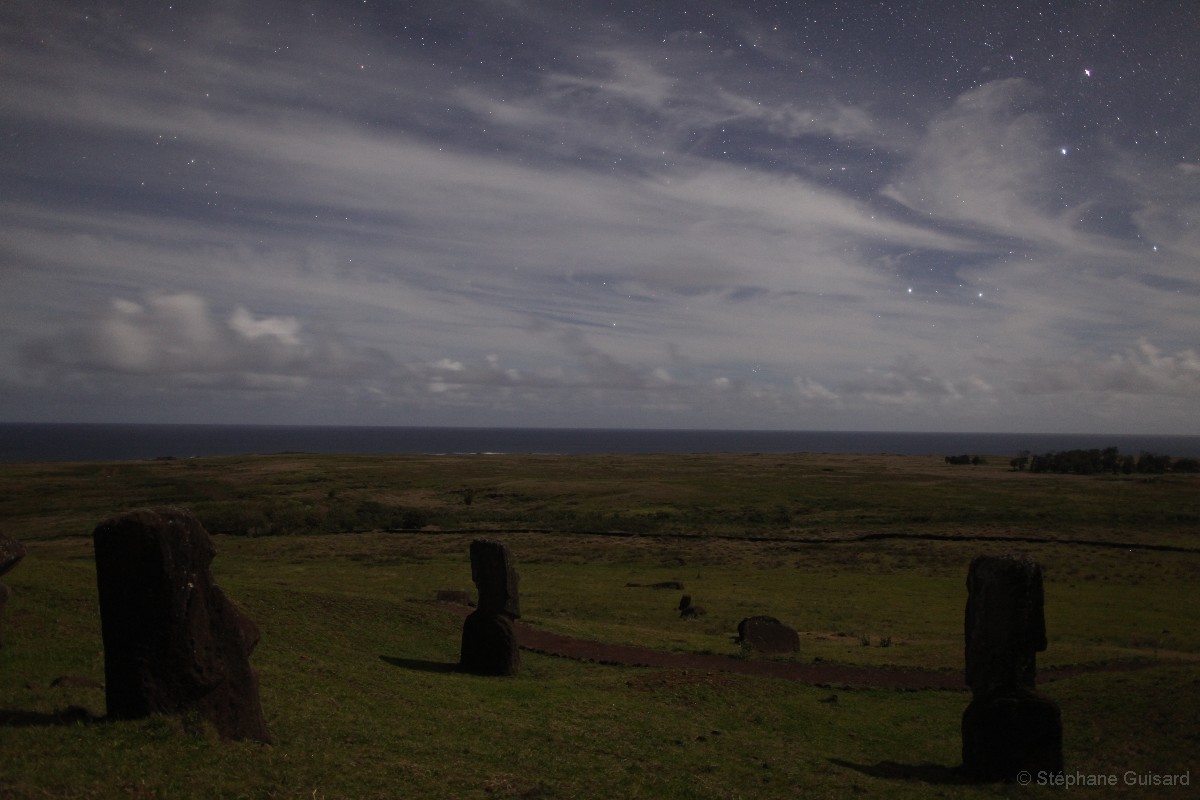HOME
Rapa Nui (Easter Island) - Rano Raraku
A UNESCO world heritage site

©Stéphane Guisard, Los Cielos de Chile
Thanks to Easter Island people for their kindness, to Luna and her family for their welcome and to CONAF and its staff to make the work presented here possible. These images were taken with the special authorization from CONAF and the Rapa Nui National Park.
Maururu tatou nu'u Rapa Nui mo te aroha, ki a Luna he nu'u ena mo haere mai. Maururu ki a CONAF he tatou tangata mo te umanga i te anga nei.
Moais are monolithic human figures carved from rock on the Polynesian island of Rapa Nui (Easter Island) between 1250 and 1500 CE. Nearly half are still at Rano Raraku, the main moais quarry, but hundreds were transported from there and set on stone platforms called ahu around the island's perimeter. Almost all moais have overly large heads three-fifths the size of their bodies. The moais are chiefly the 'living faces' (aringa ora) of deified ancestors (aringa ora ata tepuna). The pictures below were all taken at Rano Raraku.
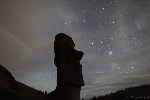
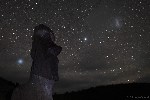
Moonbow, Canopus and Large Magellanic cloud above Moai Piro Piro.
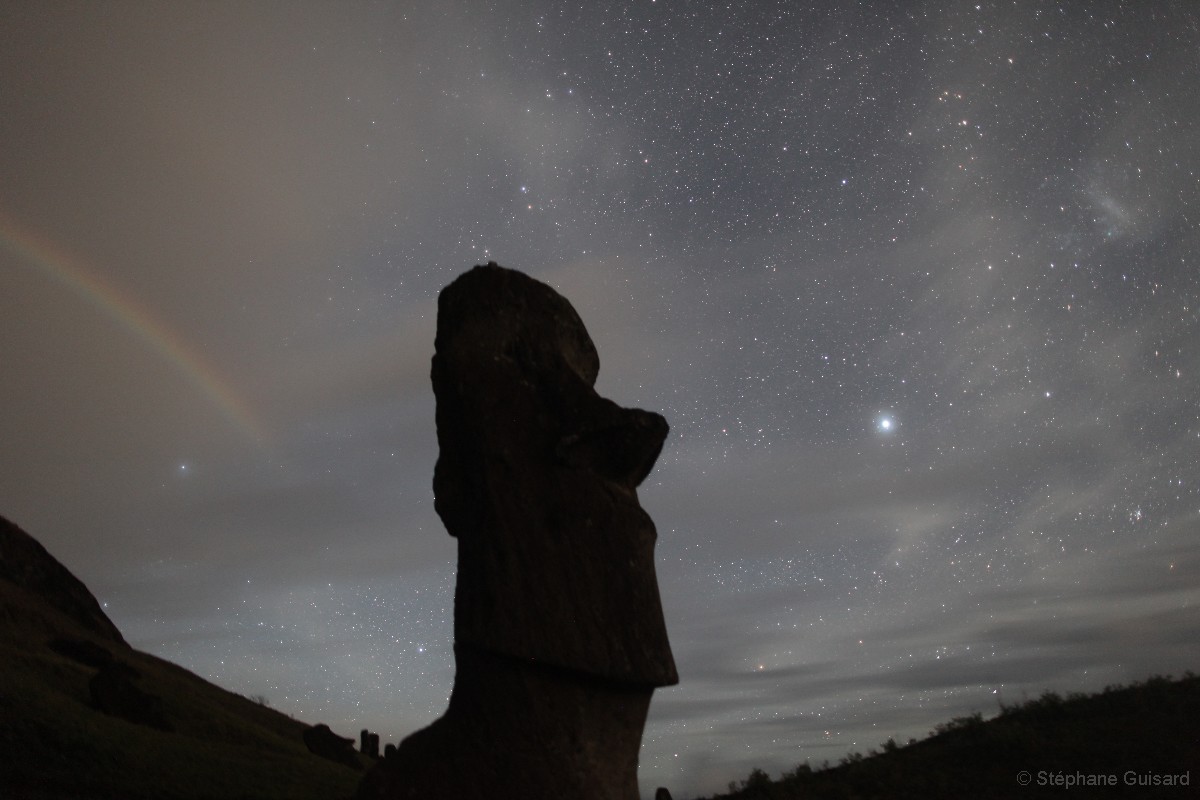
Moonbow, starry night and Moonlight above Moais.
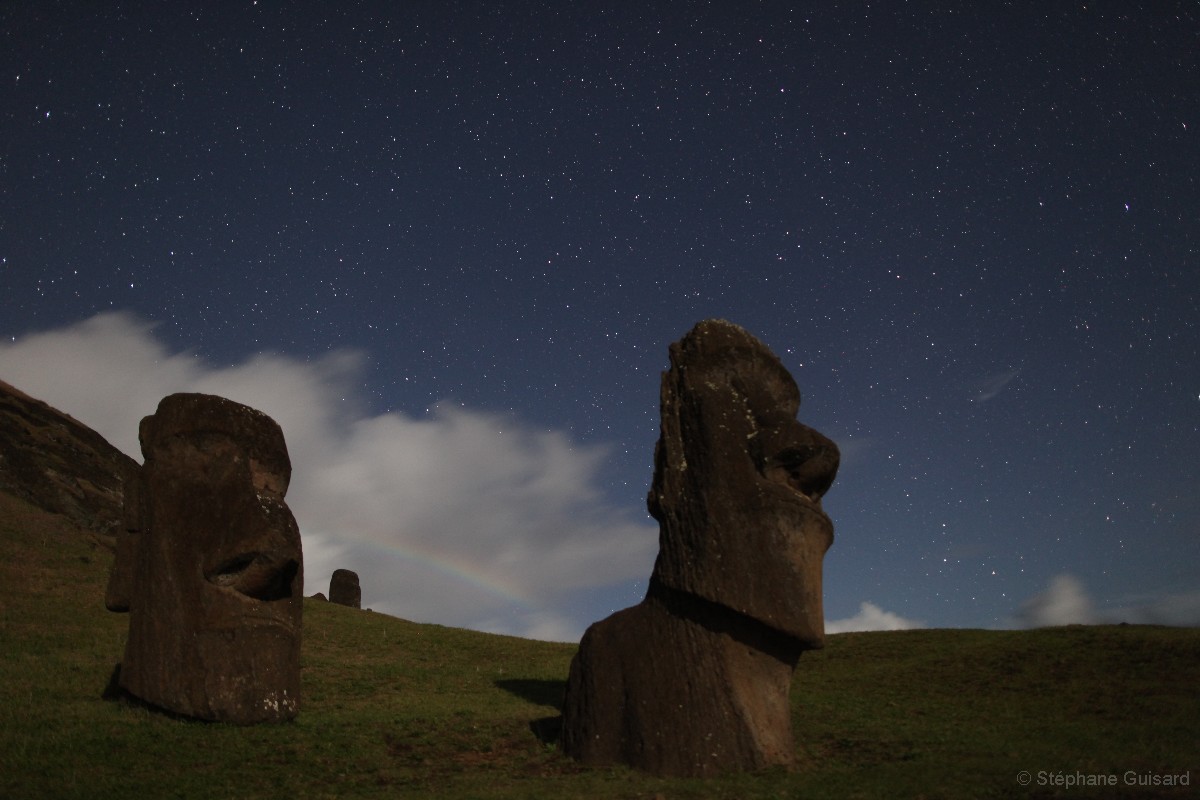
Moais looking through the clouds at the Large Magellanic clouds above the pacific Ocean.
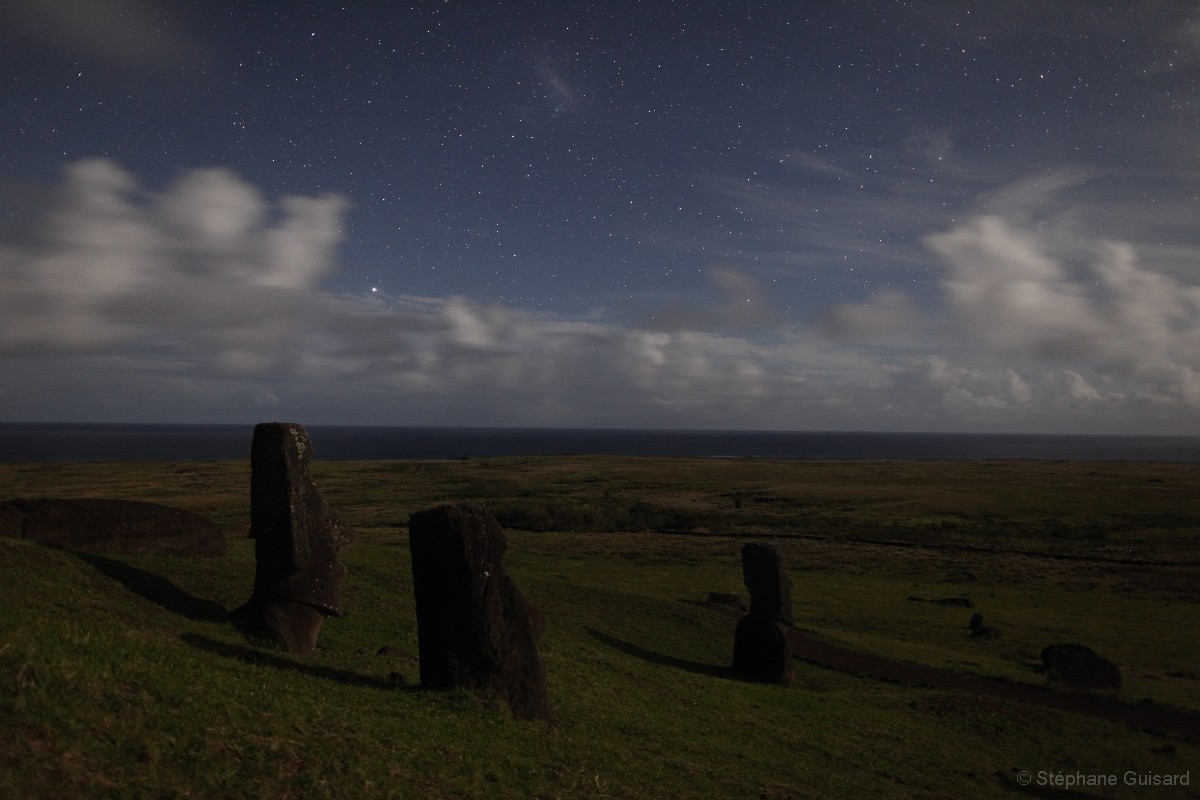
Orion, the Pleiades, "Matariki" in pascuan language, and bright Sirius (seen through the clouds) rise above Moais shadows.
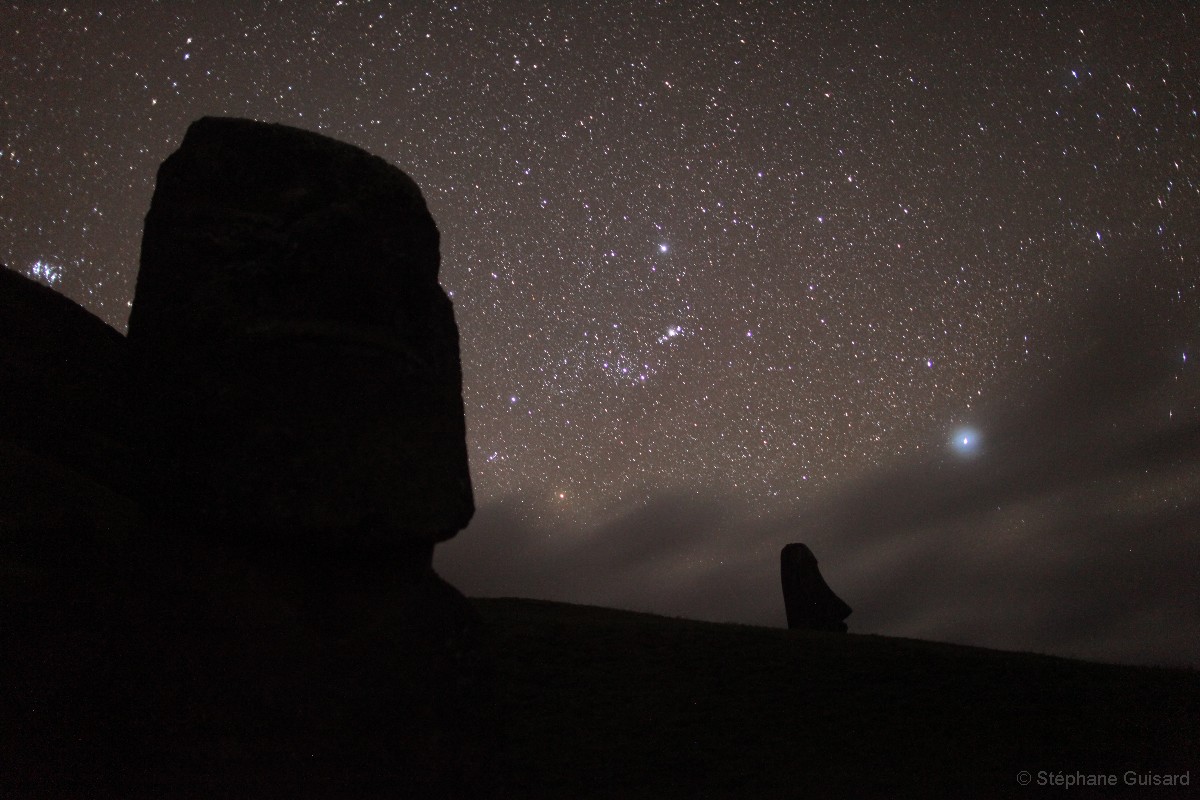
Moonbow behind Moais lit by moonlight.
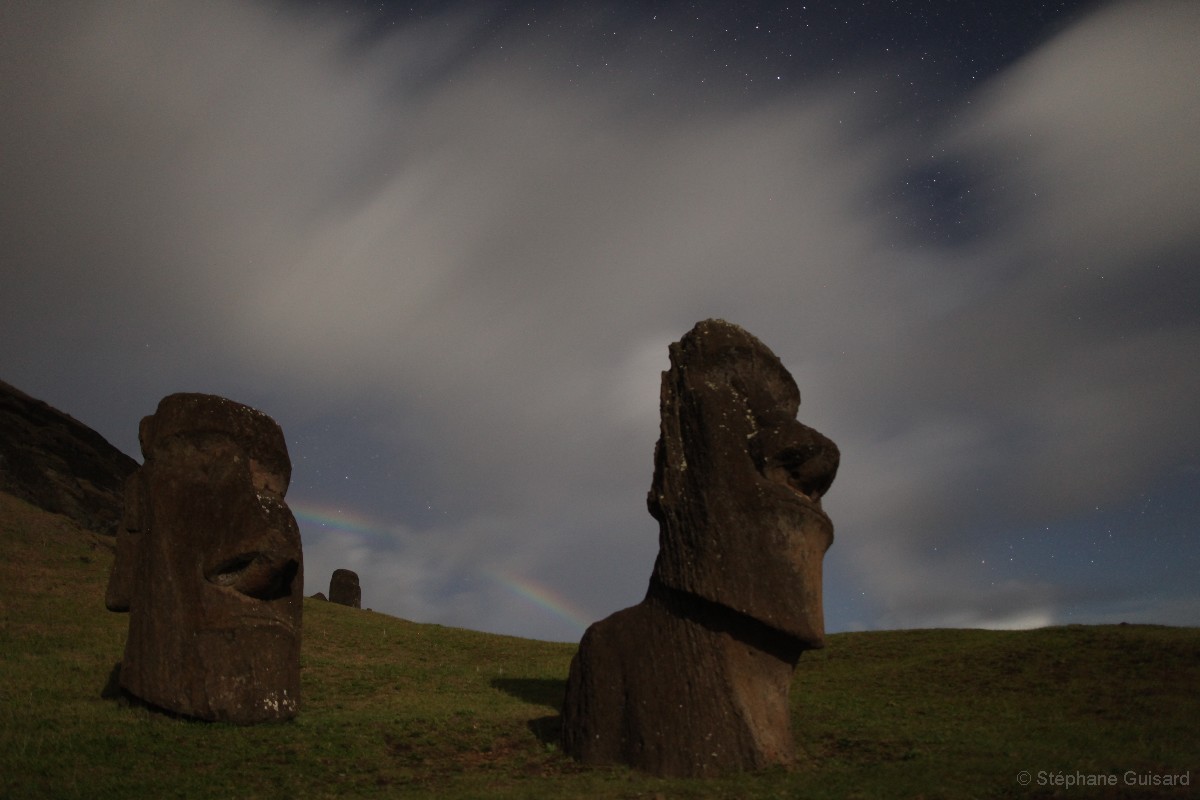
Large Magellanic Cloud, bright Canopus and Sirius rise behind Moai Piro Piro.

Moais looking at the bright alpha-beta Centauri and alpha-beta Crux (Southern Cross) stars above the pacific Ocean. Note that, unlike here at Rano Raraku where they were carved, when in position on their ahu, the Moais were looking 'inland'.
